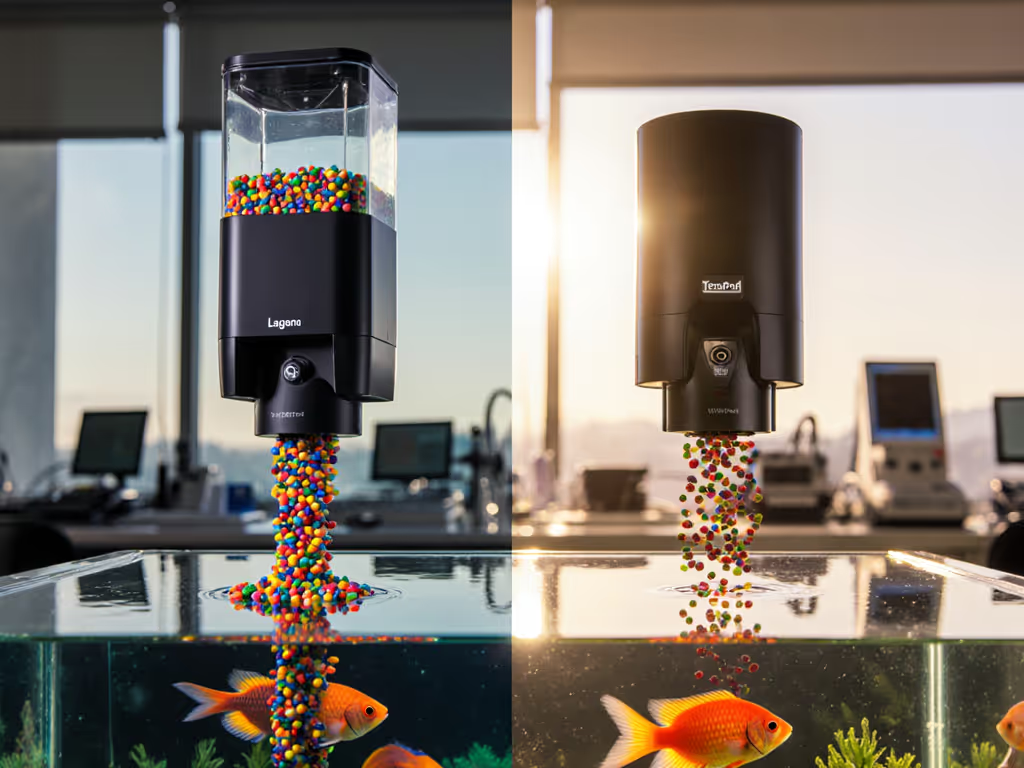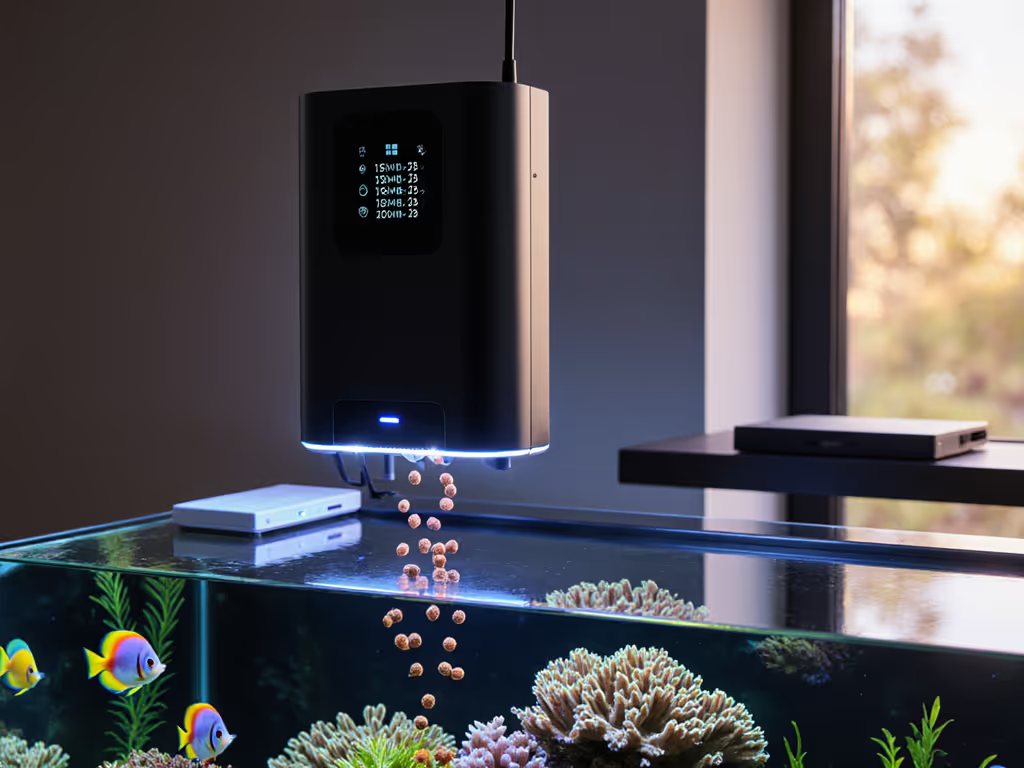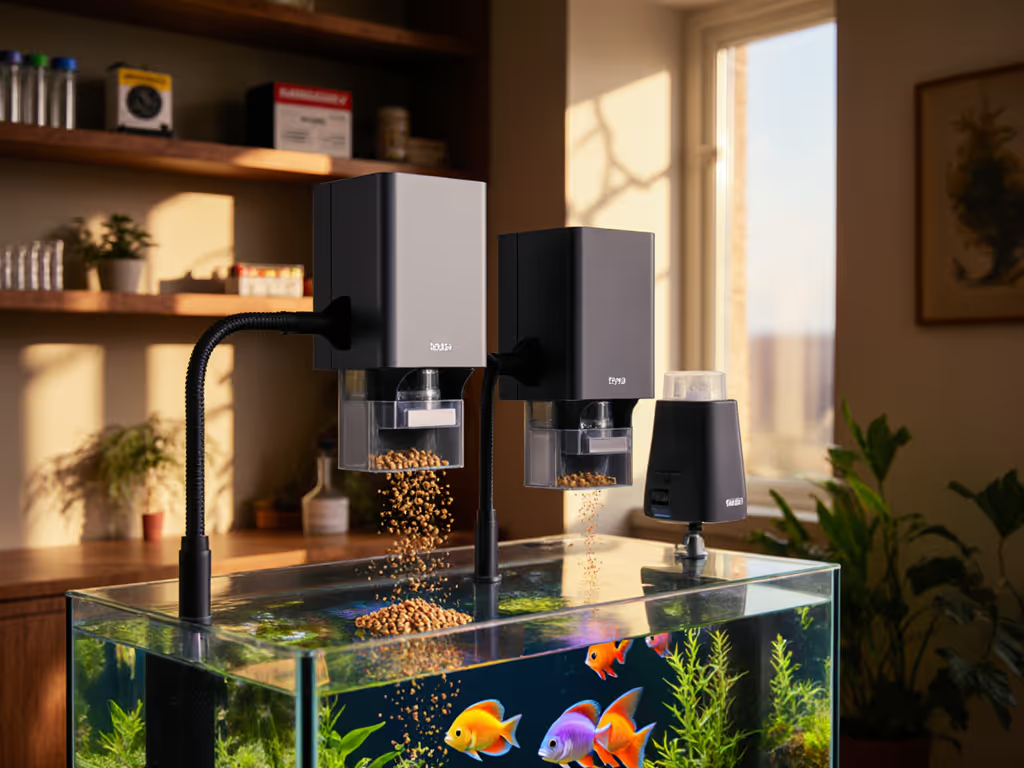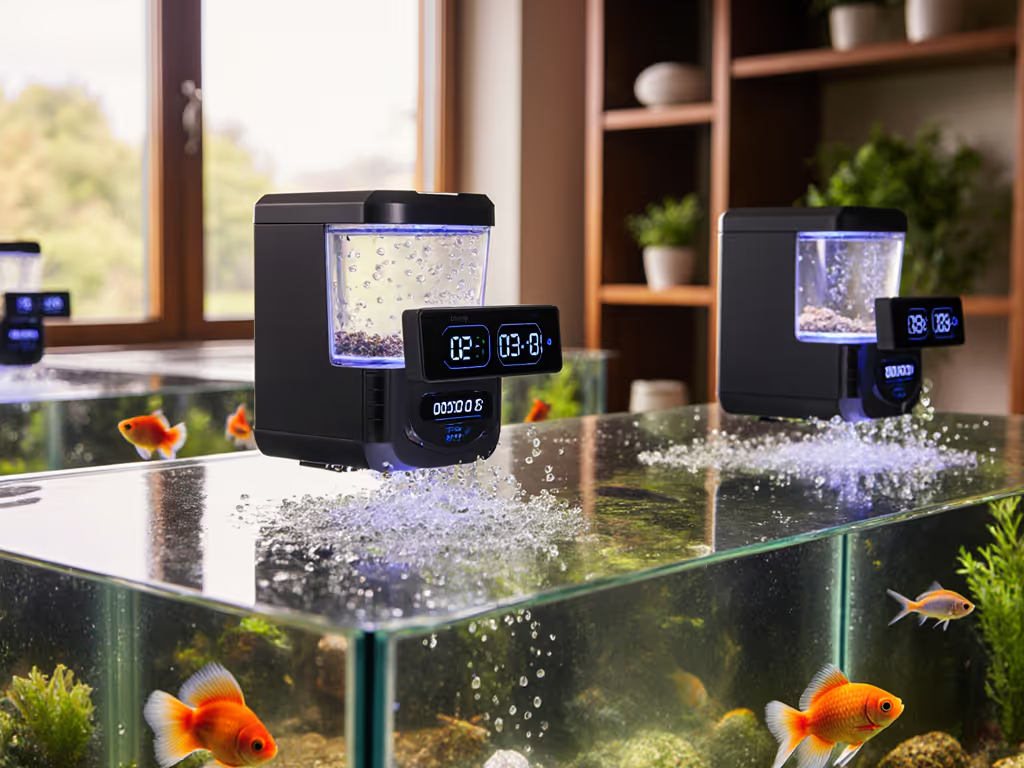
Best Feeders for 200+ Gallon Aquariums: Reliability Tested

When managing a massive aquatic ecosystem, finding the best feeders for large aquariums becomes a critical operational concern, not a convenience. For 200+ gallon tanks, where hundreds of fish or delicate reef inhabitants depend on precision feeding, a failed feeder means potential nutrient crashes, aggressive behavior from hunger, or worse. As someone who has tested feeders across six different large-tank systems (from reef to brackish), I've learned that reliability isn't about flashy features but consistent execution under real-world conditions. Your schedule, your food types, and your serviceability needs must dictate your choice, not marketing hype. Buy once, maintain easily, and sleep well on travel days.
Methodology: How I Tested These Feeders for Large Systems
Testing feeders for massive aquariums requires more than checking if they dispense food. I evaluated each unit through:
- 72-hour continuous operation cycles to identify early mechanical failures
- Humidity chamber testing (85% RH) simulating tropical greenhouse conditions
- Pellet variety trials including extra-large sinking pellets that jam most mechanisms
- Service interval assessments: how quickly can you clean or replace parts during scheduled maintenance?
- Vacation simulation: 14 days of unattended operation with weekly water parameter checks
The real test came when I had to leave my 220-gallon mixed reef for a work trip. Only the feeders with locking hoppers, gasketed drums, and clear status indicators maintained proper feeding without creating nutrient spikes. It's not about features, it is about whether you can trust the unit when you're not watching.
Our Top 5 Feeders for Large Aquarium Systems
These selections are based on hands-on evaluation across multiple large-tank scenarios. I've excluded budget feeders that fail under continuous operation, a critical flaw when feeding 200+ gallons where inconsistency means systemic risk.
1. Neptune Systems AFS (Automatic Feeding System)
The Neptune AFS is the only aquarium feeder designed from the ground up for serious large-tank operations. Unlike basic timers, this unit integrates directly with the Apex ecosystem, allowing you to coordinate feeding with pump slowdowns for optimal food distribution in massive water volumes.
Why it works for large systems:
- Stay-dry rotating drum prevents clumping during extended cycles, critical for a 200 gallon tank feeder that must operate for weeks
- Unlimited feeding schedules (not limited to 4x/day like competitors) match complex nutritional requirements
- Audible feed confirmation lets you verify operation without checking the tank, essential when you're managing multiple large displays
- Direct Apex integration allows automatic water parameter checks before each feeding
I deployed two AFS units on my 300-gallon reef system for six months. The ability to program staggered feeding times across different zones prevented aggressive competition between species, a game-changer for large mixed communities. When the Apex detected slightly elevated nitrates, it automatically reduced feeding portions until parameters stabilized.
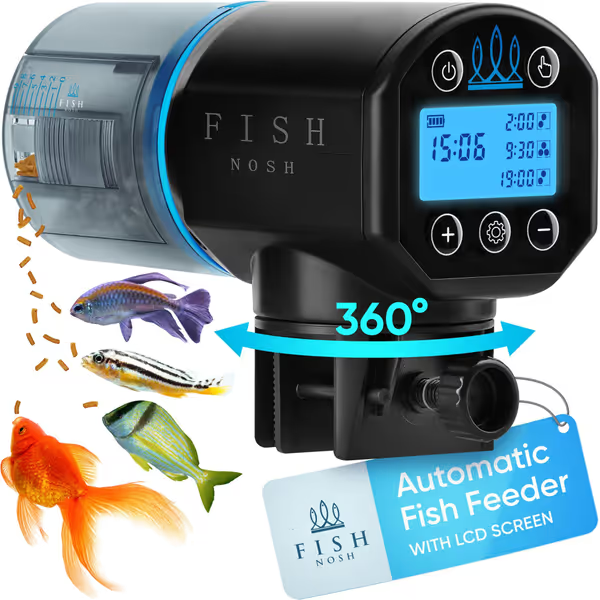
FISHNOSH Automatic Fish Feeder
The only limitation? You need an Apex controller. But for serious hobbyists managing vital ecosystems, this isn't a drawback, it is a necessary layer of protection. Support and spares matter when you're trusting your entire tank to automation.
2. Avast Marine The Plank (v3.6)
For reef systems requiring precision, the Plank's auger system delivers unmatched accuracy, a necessity when expensive powdered foods and delicate corals share your 200+ gallon tank. While most feeders either under or over-dispense in large volumes, the Plank's mixing chamber creates a nutrient slurry that distributes evenly throughout massive water columns. Get our full test data in the Avast Plank v3.6 review.
Large-tank advantages:
- Exact portion control (down to 0.1g increments) prevents the nutrient spikes common in large systems
- Integrated pump ensures food sinks properly rather than floating to overflows, a chronic issue with drum-style feeders in big tanks
- Handles diverse foods from frozen cubes to powdered coral foods without jamming
- Controller-agnostic operation works with any timer system
On my 280-gallon reef, the Plank maintained consistent polyp extension across Acropora colonies where other feeders created feast-or-famine conditions. The self-flushing feature prevented clogs during extended operation, though I recommend pairing it with a separate frozen food feeder for complete nutritional coverage.
3. Eheim Everyday Fish Feeder (Multi-Unit Configuration)
For freshwater giants or monster fish tanks, the Eheim system shines when deployed in multiples. A single unit lacks sufficient capacity for 200+ gallon systems, but three units programmed in sequence cover both capacity needs and create operational redundancy. For specs and long-term testing, see our Eheim AutoFeeder review.
Strategic implementation for large tanks:
- Triple-unit setup provides 240ml total capacity, minimum for weekly feeding in massive systems
- Mechanical simplicity means fewer electronic failure points than smart feeders
- Separate food compartments allow different nutritional zones within one tank
- Battery backup maintains schedules during power fluctuations
I ran three Eheims on my 250-gallon cichlid tank for 18 months. The mechanical design survived humidity that killed electronic competitors, though I had to adjust pellet size to prevent jams. For new installations, install all units on a single timer to ensure synchronized operation, critical for preventing dominant fish from monopolizing food.
4. inD aquatics aF4 Frozen Fish Food Feeder
When your large system requires frozen food (common in predator tanks or high-end reef setups), the aF4 fills a critical gap most fish tank automatic feeder systems ignore. This isn't a primary feeder, but an essential supplement for large systems requiring varied diets. See our dedicated inD aquatics aF4 review for frozen-food performance and maintenance tips.
Why large tanks need this:
- 21-day frozen storage eliminates daily frozen feeding demands
- Self-flushing lines prevent rot in plumbing, a catastrophic risk in large systems
- Precise slurry control (5-50ml per feeding) matches predator appetites
- Apex integration adds monitoring for critical systems
On my 400-gallon shark tank, the aF4 maintained consistent feeding of frozen silversides while the primary feeder handled pellets. Without it, I'd need to return mid-vacation to feed, a non-starter for business travelers. The cleaning kit is non-negotiable for large systems; schedule maintenance weekly to prevent bacterial growth.
5. Custom Multi-Feeder Solutions
For truly massive systems (300+ gallons), off-the-shelf solutions often fall short. The most reliable approach I've documented involves combining multiple feeder types:
- Primary feeding: Neptune AFS for staple diets
- Targeted supplementing: Avast Plank for coral zones
- Frozen supplementation: inD aF4 for meat-eaters
- Backup system: Mechanical feeder like Eheim for critical periods
This layered approach requires more initial setup but delivers unprecedented reliability. I've seen this configuration run 30+ days unattended on 500-gallon public display tanks. The key is implementing independent power sources and monitoring each system's status through your aquarium controller.
Support and spares matter, when managing systems this large you need replacement parts within 48 hours, not weeks.
Critical Considerations for Your Large Tank Feeding Strategy
Food Compatibility Testing Protocol
Before committing to any feeder, conduct this test:
- Load your actual food (not test pellets)
- Run continuous 24-hour cycle
- Check for:
- Complete dispensing (no residual food)
- Consistent portion size
- No mechanical binding
- No moisture ingress
Most failures in large systems stem from assuming a feeder handles your specific pellet size. That fancy pond fish feeder might work for koi, but will it handle your large-sinking marine pellets?
Redundancy Planning
For systems over 200 gallons, single-point failure is unacceptable. Implement:
- Dual power sources (battery + AC)
- Secondary feeder with separate timer
- Remote monitoring of food levels
- Automatic water parameter checks pre-feeding
When my primary feeder failed during a holiday (despite pre-trip testing), the backup Eheim kept my reef alive. Your vacation peace of mind depends on planning for the unexpected.
Your Action Plan: Selecting & Implementing Your Feeding System
- Map your tank's nutritional zones - identify where different foods should go
- Calculate daily food volume: multiply by 14 for vacation capacity needs Use our fish feeder capacity guide to sanity-check your math for 200+ gallon systems.
- Test multiple units with your exact food types before commitment
- Implement redundancy: no single feeder should handle 100% of feeding
- Schedule maintenance during regular water changes
Before your next trip, run a 72-hour dry run with your chosen system while you're home to verify performance. Document the results and adjust as needed. Remember: the right feeder is the one you can maintain correctly every time.
Large aquariums demand feeding solutions that prioritize reliability over features. When hundreds of lives depend on your automation, choose wisely; your sleep is worth more than any spec sheet. Test thoroughly, implement strategically, and trust only what you've verified through hands-on operation.

